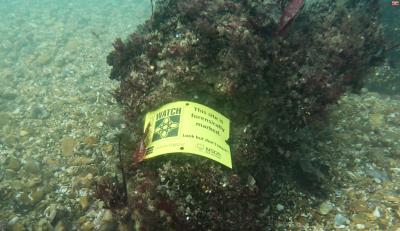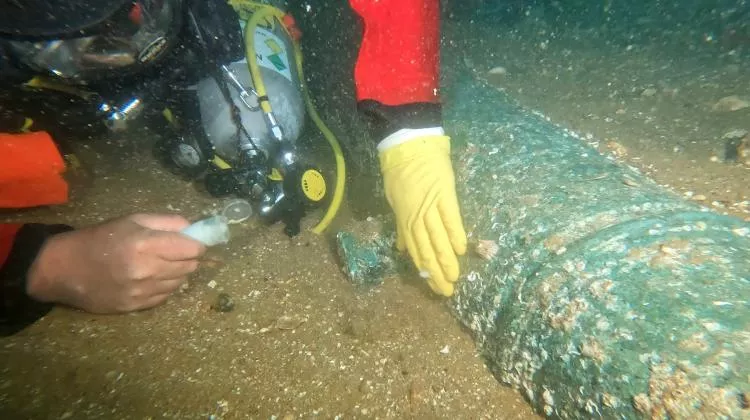Using innovative forensic markers to safeguard maritime artefacts
Beneath the waves, England's wrecks are in peril from looters. To counter this, an innovative scheme involving innovative forensic marking technology is poised to rewrite the story of underwater heritage protection.
English shipwrecks, submerged for centuries off the coast, hold the secrets of history in the form of artefacts like cannons. However, organised looting poses a significant threat.
To counter this, Historic England and British specialist contractor MSDS Marine have embarked on a ground-breaking project involving underwater forensic tagging technology. This technology, developed over eight years, traces its roots to methods used to protect heritage assets on land. It is applied directly to the marine artefacts and wrecks by divers, and had been trialled on dives this summer.
Hefin Meara, a maritime archaeologist at Historic England, explained how it works: "We mark all the vulnerable objects, such as bronze guns that are a tempting target with a resale value on the illicit market. By marking specific parts of objects, it makes them easy to track. It is going to be a game-changer for protecting sites."

Keep tabs on underwater artefacts
This covert marking technology, similar to products used to mark lead on church roofs to prevent theft, ensures that the artefacts can be traced every step of the way, from illicit divers to the middlemen involved in their sale.
Normally, artefacts pilfered from these sites often end up with false provenance claims, making them harder to trace and recover. Now, with this marking technology, potential thieves are sent a clear message: underwater artefacts from protected wreck sites are "too hot to handle."
Meara said: “The deterrent value is massive. And if the worst happens and someone does steal something, this should help us to get the material back and to prosecute.”

Historical significance
Duncan Wilson, Chief Executive of Historic England, emphasised the importance of this collaboration: "Our nationally important shipwrecks tell the story of England’s maritime past. Underwater forensic marking of artefacts is a great leap forward in helping to protect them. [...] International collaboration like this is so important for preserving our shared maritime heritage."
The initiative not only protects wrecks and artefacts like cannons but also the underwater archaeology sites that hold substantial historical and archaeological value. Of the 37,000 known shipwrecks off England's coast, 57 are granted the highest level of protection. They can only be dived by licensed divers, and their contents are safeguarded by law.
The 50th anniversary of the Protection of Wrecks Act 1973, which provides the highest level of protection to these wrecks, is being marked this year.

Klein Hollandia wreck
One of the shipwrecks being marked is the Klein Hollandia, a 17th-century Dutch warship. This vessel, which engaged in significant battles during the Second Anglo-Dutch War (1665-1667), has great historical value and offers insights into shipbuilding and warship activities during the 17th century.
The dive in September 2023 provided maritime archaeologists with an opportunity to document the surviving features of the wreck, revealing unique elements such as a double layer of well-preserved oak planking on its hull and possibly two additional layers of planking made from coniferous wood.
The forensic marking project, which began in 2018, was funded by Historic England and the Cultural Heritage Agency of the Netherlands. It safeguards not only Britain’s maritime artefacts but also the rich maritime history of England, ensuring that it remains intact for generations to come.




























